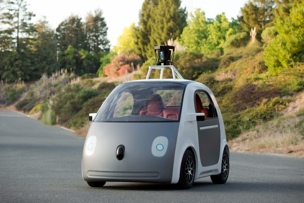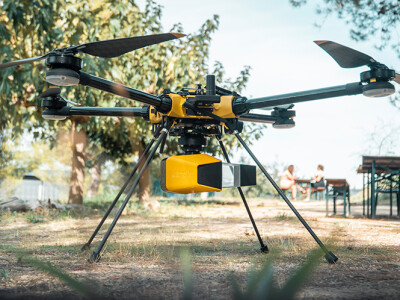This adorable little guy is the reason Google has gotten into the LiDAR game.
This week IEEE Spectrum, the flagship magazine of the world’s largest professional organization for engineering and applied sciences, ran a piece about the Google self-driving car where they named all of Google’s partners in the project. Among them were Roush, who has been tasked with assembly, and LG, who will supply the battery. Urmson also listed Bosch, ZFLS, RCO, FRIMO, and Prefix as working with Google.
The kicker of the article for us comes when the discussion turns to the LiDAR sensor Google is using. You might think that Google’s partner Bosch, who went on a high-profile tour of publications late last year announcing their intention to release automotive LiDAR by 2020 would be a clear choice to supply the sensor, but you’d be wrong. You might also think that the LiDAR would be made by Velodyne, who supplied the sensors used for Google’s self-driving car prototypes and recently announced a LiDAR sensor costing less than $8,000 US.
According to the article, Urmson has said that Google is developing its own LiDAR sensor.
IEEE was pretty blunt on Google’s reasoning: “Urmson said that some of the LiDAR sensors were being designed in house because Google was unhappy with what’s available.” Local paper Livingston Daily also supplied some coverage of Urmson’s speech, and corroborates this story. The paper has Urmson explaining that Google has already “developed its own smaller and less expensive LiDAR device that it is testing on the prototypes.”
Since the LiDAR (as I’m sure I don’t have to tell you) is the most expensive part of the whole system, it would make sense for Google to be highly motivated to bring the cost of LiDAR sensors down. Urmson has been quoted as saying that “there is no ‘unobtanium’ in a Google car,” which means that they will work to bring the technology down in price before their projected release date in 5 years.
Google getting into the LiDAR industry raises a ton of interesting questions. As IEEE asks, can Velodyne or another LiDAR supplier bring the price down fast enough to meet Google’s demands before the car is released?
On top of that, we could ask some questions of our own. Exactly how cheap does Google want this LiDAR sensor to be? Would they sell this cheap, small sensor as part of other LiDAR solutions, or strictly as part of the car system?
If they were to sell it on its own, their sensors would be cheap and probably not accurate enough to gather survey-grade data. But that doesn’t mean that they wouldn’t have a lot of practical uses. Imagine if Google made a LiDAR sensor cheap enough that you could buy a bunch and install them all around your plant, factory, or oil rig in order to get constant, up-to-the-minute data about your most important assets?
Lastly, if Google is making a tiny, cheap LiDAR for cars, who knows what else they’re planning to do with LiDAR? They have a huge R&D budget and a foot in the door with the technology, so what happens next? For right now, we can only speculate.






